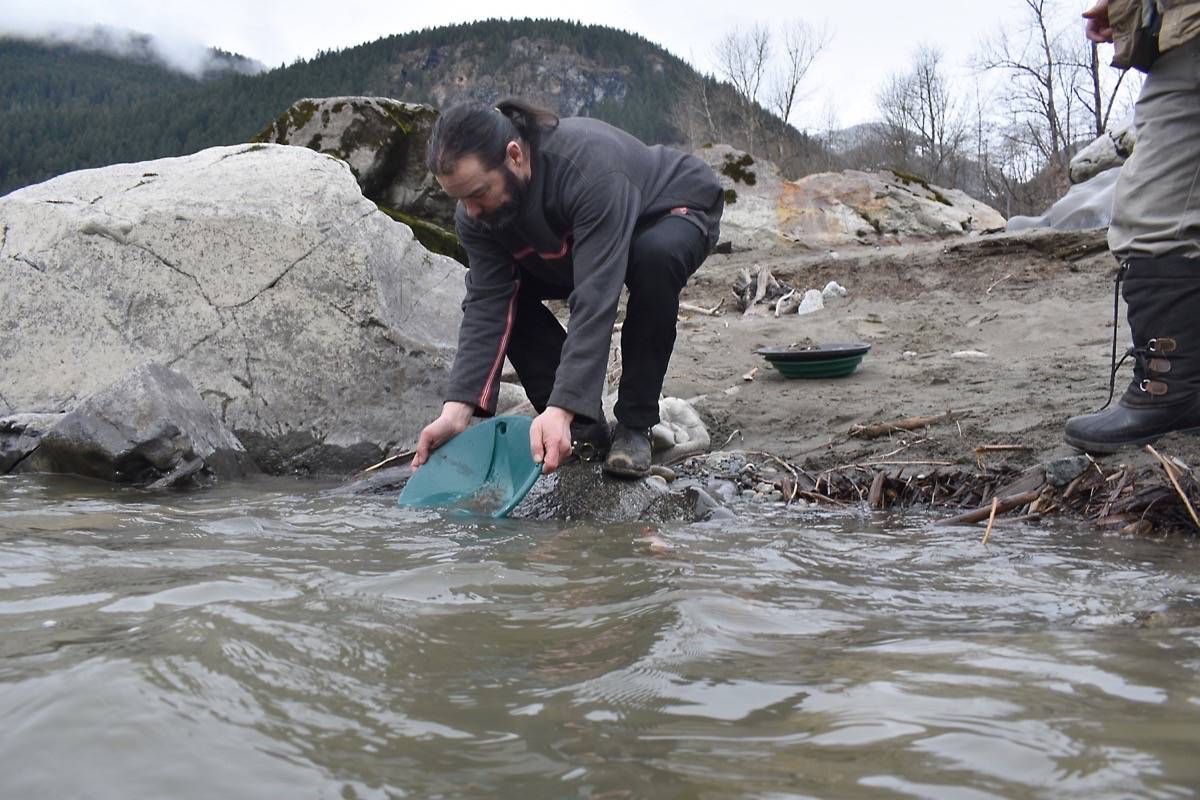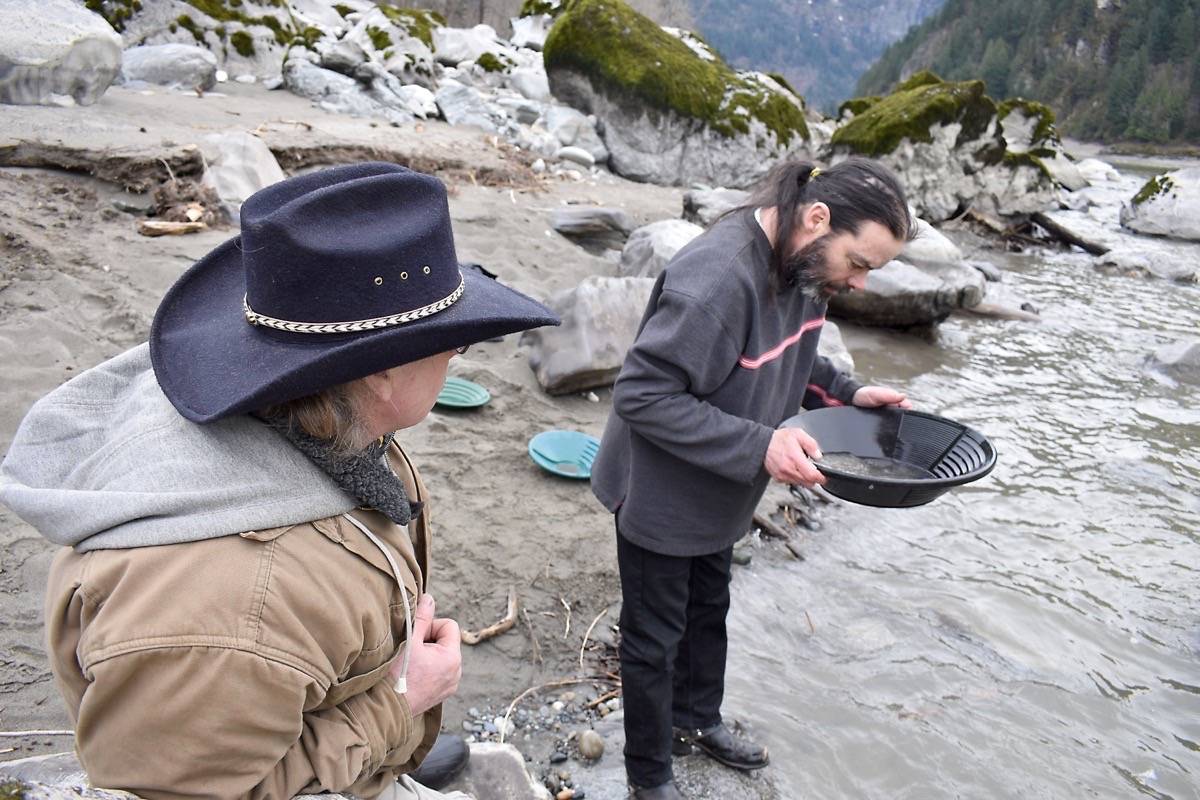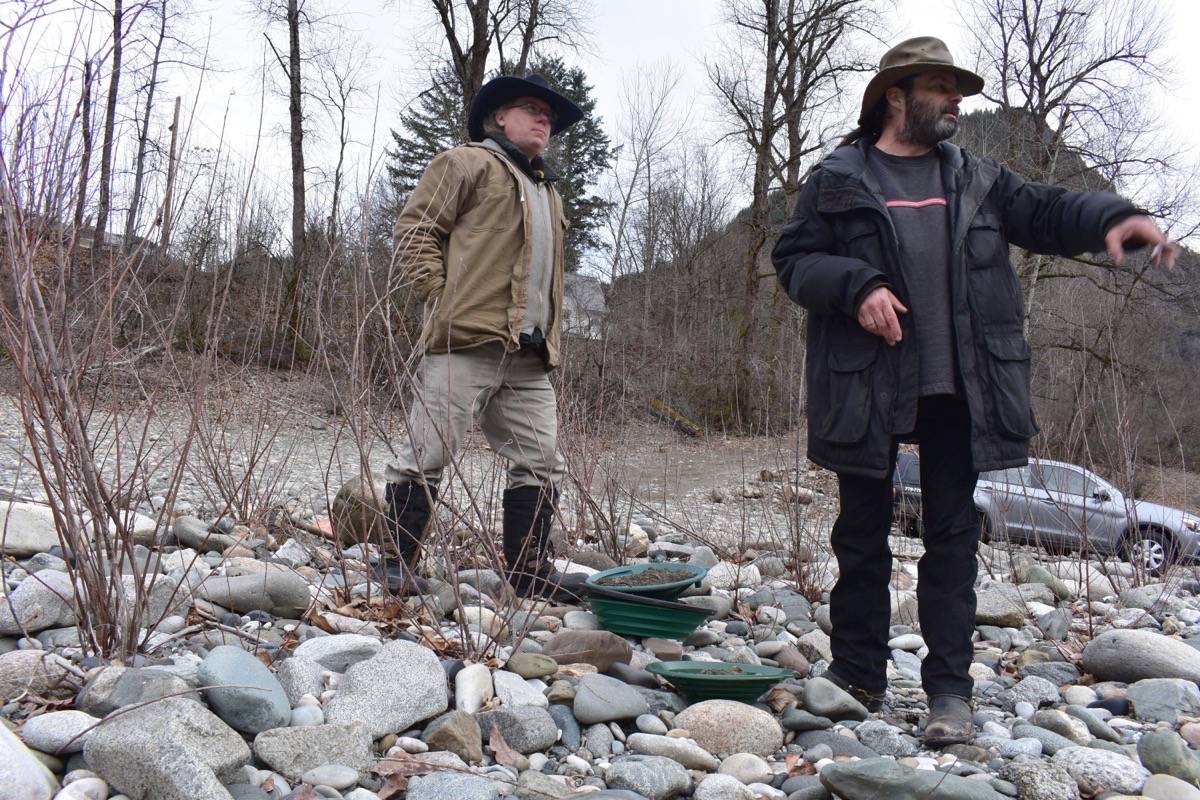John Fair is one of the few gold prospectors left in B.C. and he’s offering gold panning lessons from the banks of the Fraser River.
“We’re avid prospectors, we do this every day of our life,” he said, as he took a look around the rocky bank of the Fraser below the town of Yale, population circa 100. Just over 159 years ago, prospectors struck gold in Yale and the town came alive. At one point it had a constituent base of 25,000 people, the largest city north of San Francisco as miners from the California Rush lept at the chance of another opportunity to strike it rich.
Now, full-time prospectors and panners are few and far between, Fair said.
They live a different kind of life, Fair himself spent hundreds of days living outdoors last year.
“It’s free, it has no burdens,” he said. “We live in the bush, we love our life in the bush, we live off the land, and we read nature.”
Fair first learned about gold panning from his uncle when he was seven years old, during a time when his family was going through difficult times and were facing poverty.
“It’s one of the only things that stuck with me besides working in the sciences, cooking and music. I just ran with my passions, I stuck with that,” he said.
Along the waterline, Fair gave an impromptu lesson to his friend and student Dexter Livingstone. The first step was to assess the ground, looking at how the water flows in over the bank and where the plants are growing.
“One of the nice thing about mining, prospecting is, where the plants are doing well there’s minerals in the ground,” he said, pointing to the moss growing on the boulders along the bank.
Fair said to look for the five indicators —black sand, pyrite, garnets, native copper, serpentine —where any three of these exist you will find gold, silver or platinum.
All of the indicators can be seen on the beach, Fair said, and began to fill his pans.
Although panning is a lot of science, it’s more than just knowing your metals. It is also knowing your history, he said, as he points out one point further up the bank where he doesn’t dig.
“When the Chinese came through here mining, there were lead tops on the wine bottles. They’d peel them off and throw them on the ground,” he said of the time when Yale was flourishing as a gold rush town. So he stays below this area when he digs for gold.
It’s also about a state of mind, Fair explained as he used the modern plastic pan to wash out rocks and sand, leaving tiny specks of visible gold behind.
“That’s why I say, if you’re afraid you’re going to lose it, you’re gonna lose it. But if you’re confident you’re not going to lose it, it’s going to stay right there,” he said, pointing out the tiny particles of gold. “Once you know what it looks like, it doesn’t look like anything else.”
Fair said he has taught over 3,000 people, a few of whom have become full-time panners. His advice to beginner gold fiends? “Keep your pans wet and your shovels dirty.”
Is there more to this story?
emelie.peacock@hopestandard.com
Like us on Facebook and follow us on Twitter



